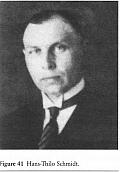On this page:


WORLDTIMER FACEOFF — SEIKO V. CITIZEN
A REVIEW BY LES ZETLEIN
PAGE 1 OF 3
(Note: Click on thumbnails to enlarge photos. Should you wish to print out this review in its entirety, please check your toner/ink cartridge before you start—it runs from 26-42 A4-size pages, depending on your printer and text size. Sorry.)
Introduction
WHICHEVER WAY YOU LOOK AT IT, the wheel was a great invention. We owe a lot to the cavewoman who first pointed out to her proud mate that his new-fangled "cart", the creation of which he had laboured long and hard over, would be much easier to pull and more comfortable to ride in, if only he would round off the corners on those funny square stone things keeping the cart off the ground. One can only imagine the response from Cro-Magnon man. "What would you know? Stick to your woolly mammoth herding and keep out of my hair!" Which, considering the fashion of the day and the lack of suitably-qualified barbers, would not have been easy.
The usefulness and ubiquity of the wheel struck me yet again recently as I held two pristine examples of 1970s mechanical worldtimer watches in my hands. In my left hand, a Citizen. In my right, a Seiko. Both alike in many ways, and yet completely different in others. Both had the names of major cities around the world printed on a rotatable wheel around the dial circumference. Both had a red 24-hour hand.
"Nice, aren't they?", whispered the devil's smooth, slippery voice in my ear. "You don't often see them in such good condition. And they're very reasonably priced, too." I felt myself weakening to his infernal temptation.
"Where did you get them from, John you old devil?" I asked my watchmaker. He grinned a devilish grin and tapped the side of his nose with his finger.
"Ah, that would be telling. Perhaps you'd like to take them home and do a write-up on them...?" He was really tightening the screws now.
How could I refuse? And later, playing with the city name wheel on each watch, turning it first this way and then that, I thought of another set of wheels I had seen recently, only these were bigger, there were many more of them, and they had helped to shorten the second World War by a couple of years or so. And therein lies another fascinating episode of world history, which I thought I might relate to you. I apologise in advance for the length of this story, but as I delved deeper into my research I kept coming across fascinating snippets and insights of what it was like to live through those days, and why events took place they way they did, and much as I wanted to include everything, I had to force myself to be selective. Even so, there's a lot to wade through!
The usefulness and ubiquity of the wheel struck me yet again recently as I held two pristine examples of 1970s mechanical worldtimer watches in my hands. In my left hand, a Citizen. In my right, a Seiko. Both alike in many ways, and yet completely different in others. Both had the names of major cities around the world printed on a rotatable wheel around the dial circumference. Both had a red 24-hour hand.
"Nice, aren't they?", whispered the devil's smooth, slippery voice in my ear. "You don't often see them in such good condition. And they're very reasonably priced, too." I felt myself weakening to his infernal temptation.
"Where did you get them from, John you old devil?" I asked my watchmaker. He grinned a devilish grin and tapped the side of his nose with his finger.
"Ah, that would be telling. Perhaps you'd like to take them home and do a write-up on them...?" He was really tightening the screws now.
How could I refuse? And later, playing with the city name wheel on each watch, turning it first this way and then that, I thought of another set of wheels I had seen recently, only these were bigger, there were many more of them, and they had helped to shorten the second World War by a couple of years or so. And therein lies another fascinating episode of world history, which I thought I might relate to you. I apologise in advance for the length of this story, but as I delved deeper into my research I kept coming across fascinating snippets and insights of what it was like to live through those days, and why events took place they way they did, and much as I wanted to include everything, I had to force myself to be selective. Even so, there's a lot to wade through!
















